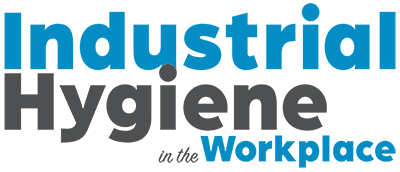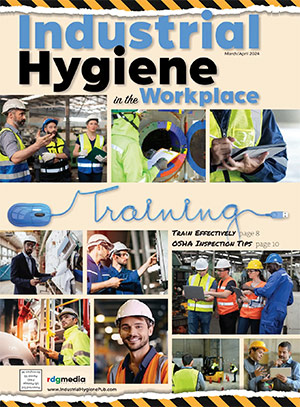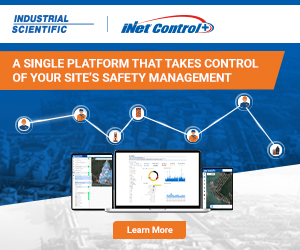Train Effectively: Five Ways Employers Can Get the Most Out of Safety Training
By: Gen Handley, Contributor
We want our employees to be safe. To do that, we develop specific safety protocols and measures that will help protect them in their unique work circumstances, providing comprehensive coverage of their well-being. However, it can be challenging to remember a large number of safety protocols or steps—particularly when you must comply with OHS legislation, regulations and safety standards.
When workers are busy with their jobs, these steps and protocols must be almost second nature, so when an accident does happen, they can respond in a competent, composed manner. The most effective strategy an employer can take to educate their workers about important safety protocols and procedures is safety training. Through interactivity and engagement, safety training can ingrain practices and knowledge that benefit both employees and the organization.
Training Requirements
The Occupational Safety and Health Administration (OSHA) requires employers and companies to provide training to employees who face significant safety hazards while in their employment, which can include working alone, workplace violence, first aid and CPR. For many OSHA safety standards, there are “explicit safety and health training requirements” required by the employer, so the worker can perform their job safely. These requirements and standards have been organized into five categories:
- General Industry
- Maritime
- Construction
- Agriculture
- Federal Employee Programs
Types of Safety Training Available
Safety training has evolved beyond the walls of the traditional room or structured space, into online and virtual reality a pplications, bringing more opportunities to learn and benefit different employees and the organizations for which they work. To promote tighter relationships amongst employees, it is better to provide in-person training that involves engagement with staff for specific safety skills and knowledge.

The most effective strategy an employer can take to educate their workers about important safety protocols and procedures is safety training. Through interactivity and engagement, safety training can ingrain practices and knowledge that benefit both employees and the organization. (pornchai – stock.adobe.com)
How to Get the Most Out of Safety Training
- Crystal-clear reasons: It is important to communicate to staff why this training is important and how it will protect them from specific hazards identified.
- Research and customize: When developing and planning safety training for your organization, spend a significant amount of time looking at what areas your employees would benefit most.
- Flexible and fun: Try to keep the sessions as short as possible, with plenty of breaks—and keep it fun—employing different activities and strategies to engage the team.
- Argument for compliance: Determine if safety training is required by OSHA or under industry standards and regulations (making it mandatory to complete).
- Accreditation opportunities: If you’re looking for safety training ideas, consider accreditation and certification opportunities when creating a plan or program, providing even more incentive for participants.
How Employees Can Benefit
Safety training has been found to significantly improve occupational safety and health and can increase workers’ knowledge and abilities, resulting in fewer workplace injuries and accidents. Additionally, it helps employees be prepared for potential occupational hazards in their professional environment, providing them with the skills to work safely.
How the Employer Can Benefit
Because their staff is more engaged in their safety, their environment and with each other, the employer benefits from a more secure and productive company. A safer company has fewer accidents and injuries, as well as longer term benefits, such as reduced staff turnover—because people want to continue to work at a safe organization.
How to Choose the Best Fit
If you do look online or with an external provider, make sure you follow these steps to choose the best fit for your team and safety needs:
Assess your current hazards: Look at your current occupational hazards, so you can examine what particular training is required to effectively protect your staff.
Talk to the team: Talk to your workers about what they are most concerned about and what training they would benefit from—you can do this in an open setting or one-on-one.
Focus on the why: From your safety hazard assessment and staff consultation and research, determine the objective or why this training is being provided; focus on this during your search.
Explore What’s Out There
The boost in online training and OHS educational opportunities has brought a wider range of types of available safety training for employers and employees. There is safety training for every occupational health and safety topic, including proper PPE use and disposal, workplace violence, fire safety practices and procedures, as well as OSHA compliance.
In addition to addressing the safety concerns and challenges of your employees and company, explore the training opportunities available, looking at how they can benefit the safety—as well as operations and collaboration—of your team and organization.
Gen Handley is Marketing and Growth Coordinator, Tsunami Solutions Ltd., gen.handley@safetylineloneworker.com
Share on Socials!
Enhancing Gas Detection with Pattern-Finding & Predictive AI
Casella to Present Virtual Seminar on Personal Monitoring and Social Distancing at AIHce EXP 2020 Virtual Expo
Noise Pollution in Industrial Settings
Leaders in Industrial Hygiene
Council for Accreditation in Occupational Hearing Conservation (CAOHC)
Subscribe!
Sign up to receive our industry publications for FREE!









